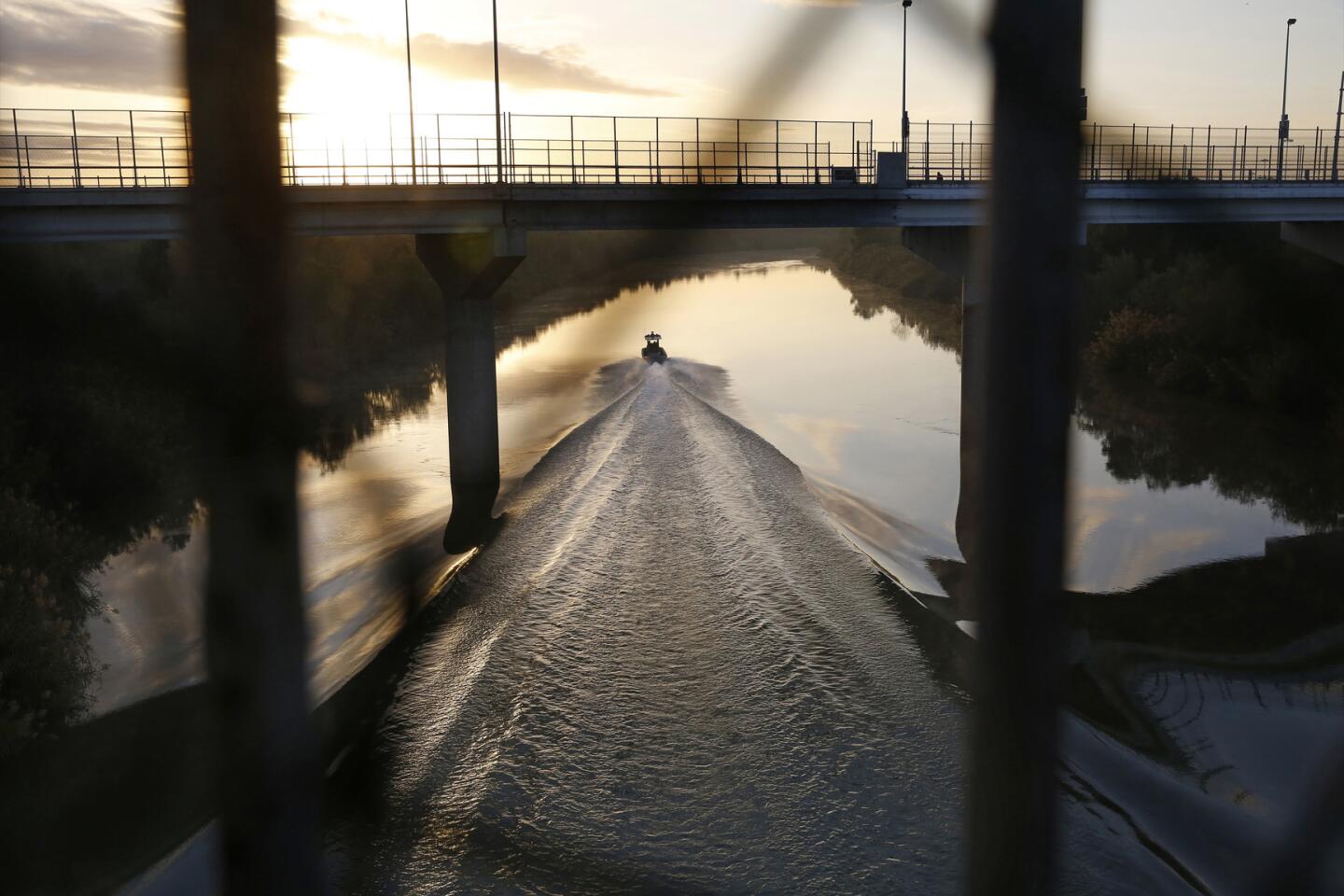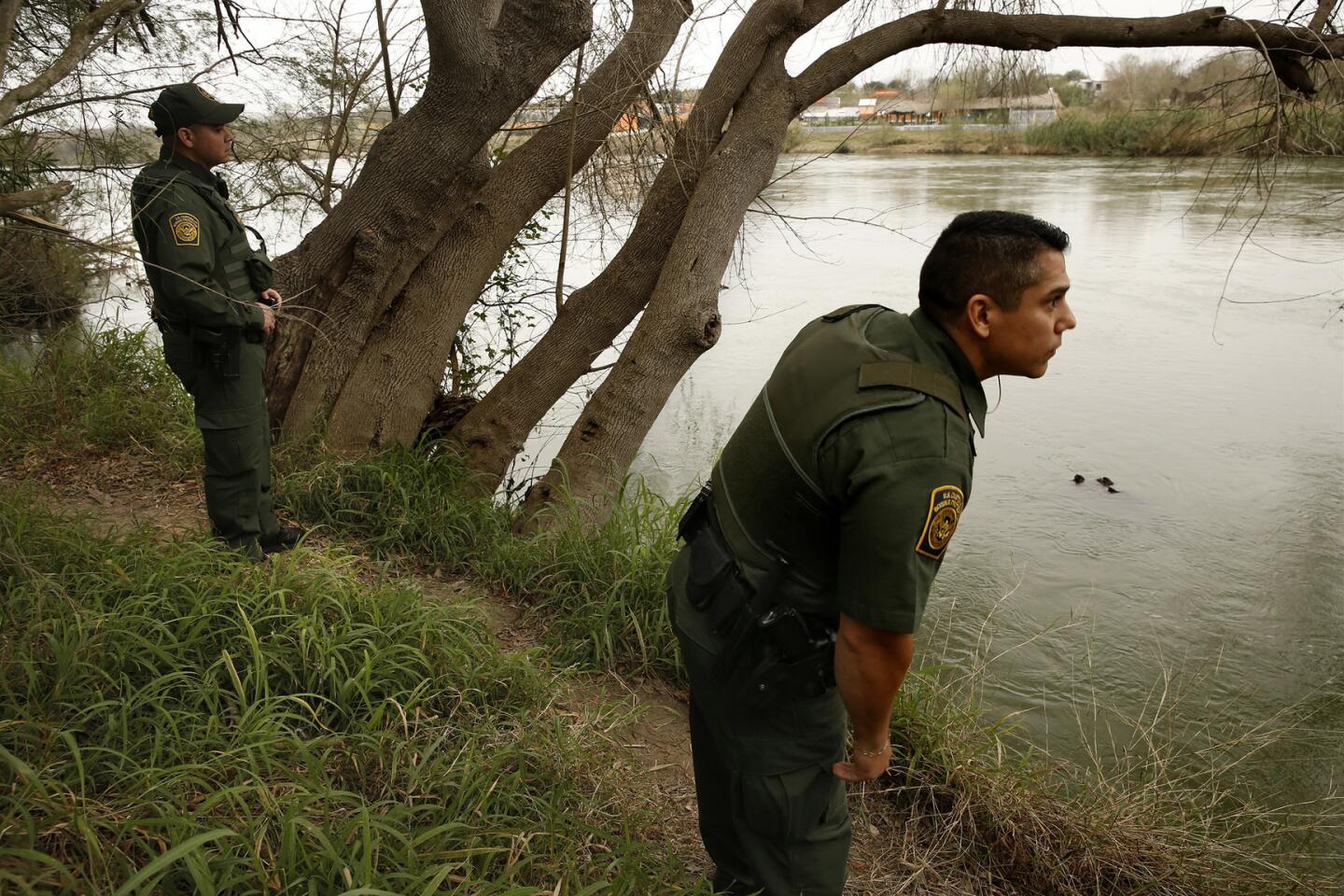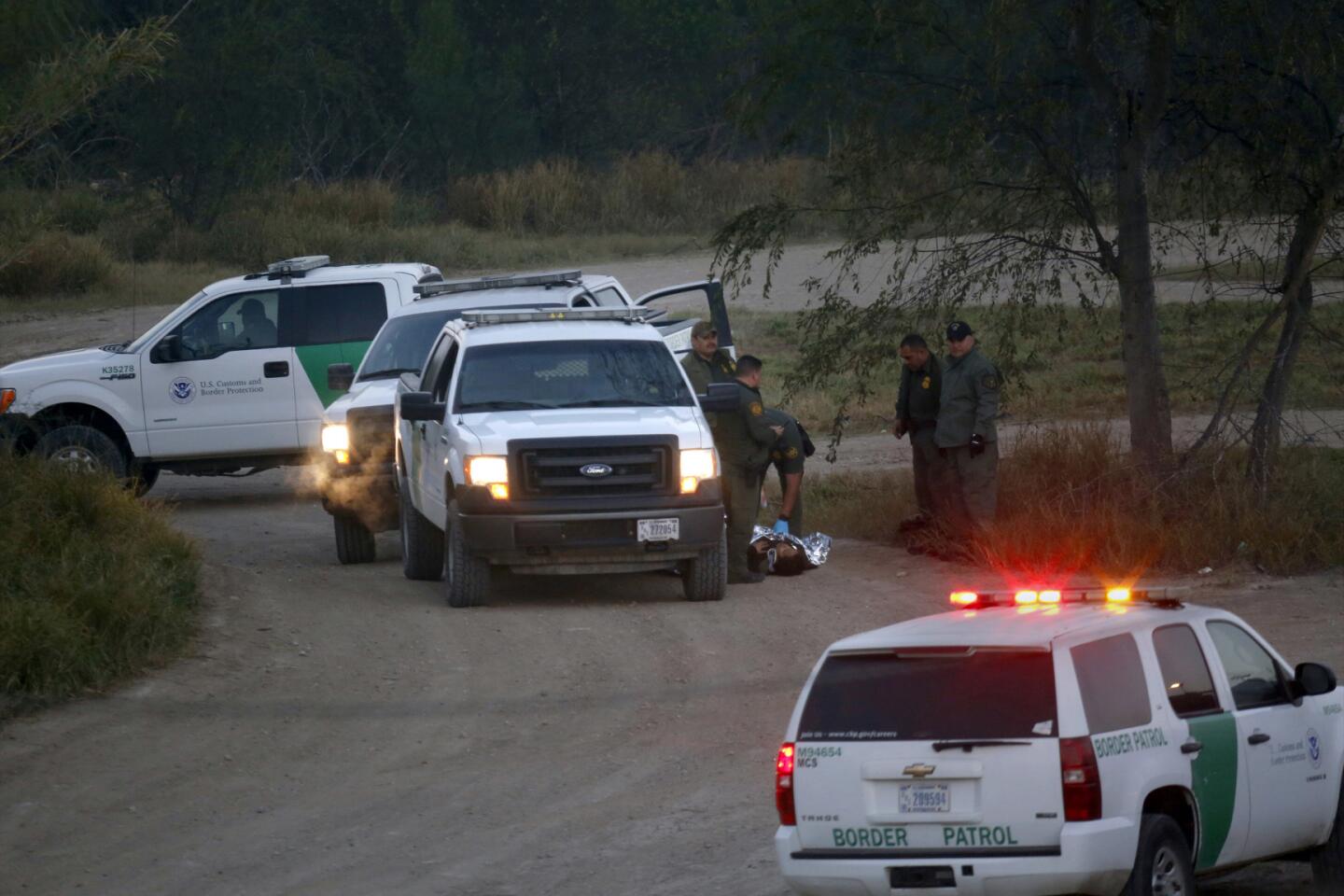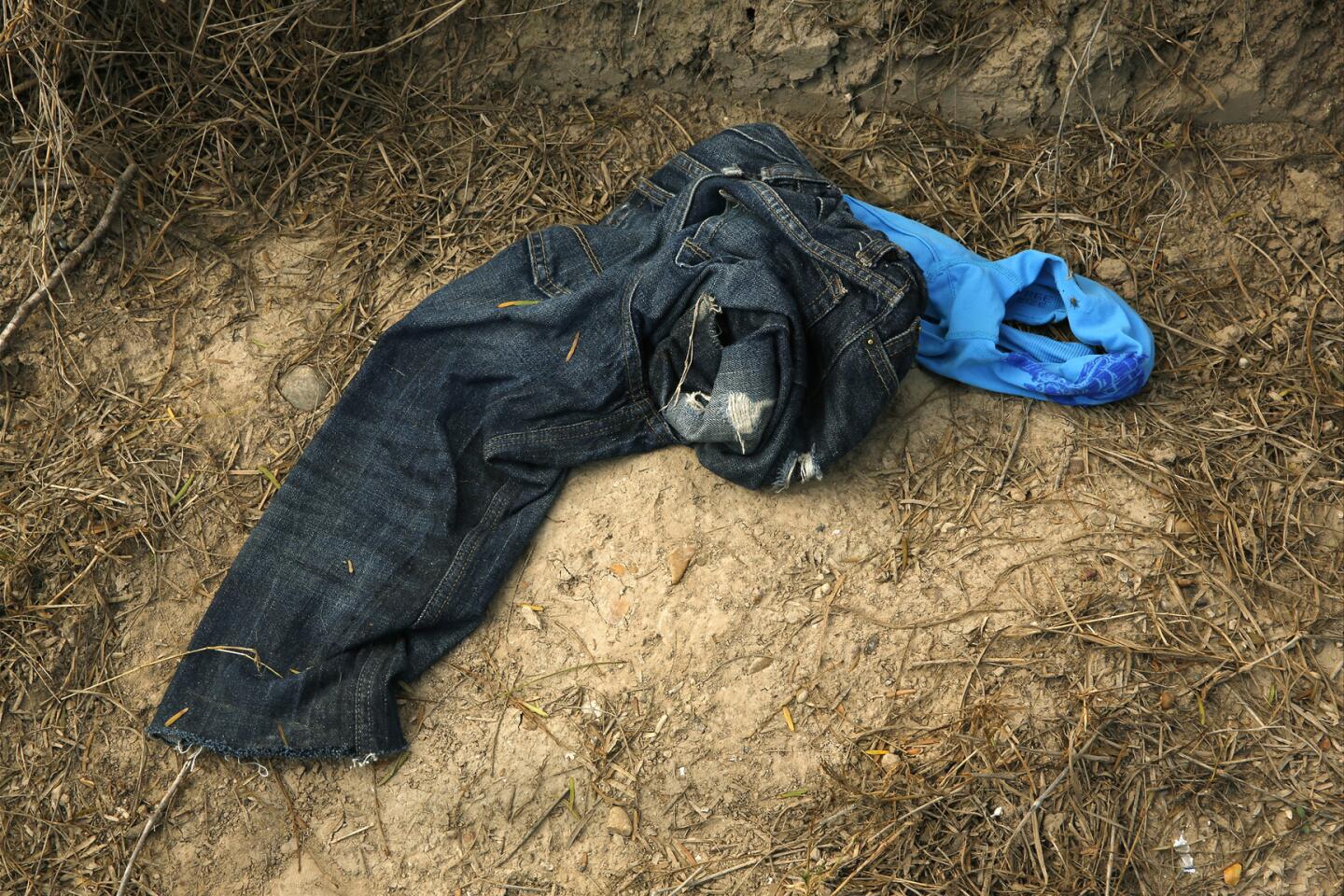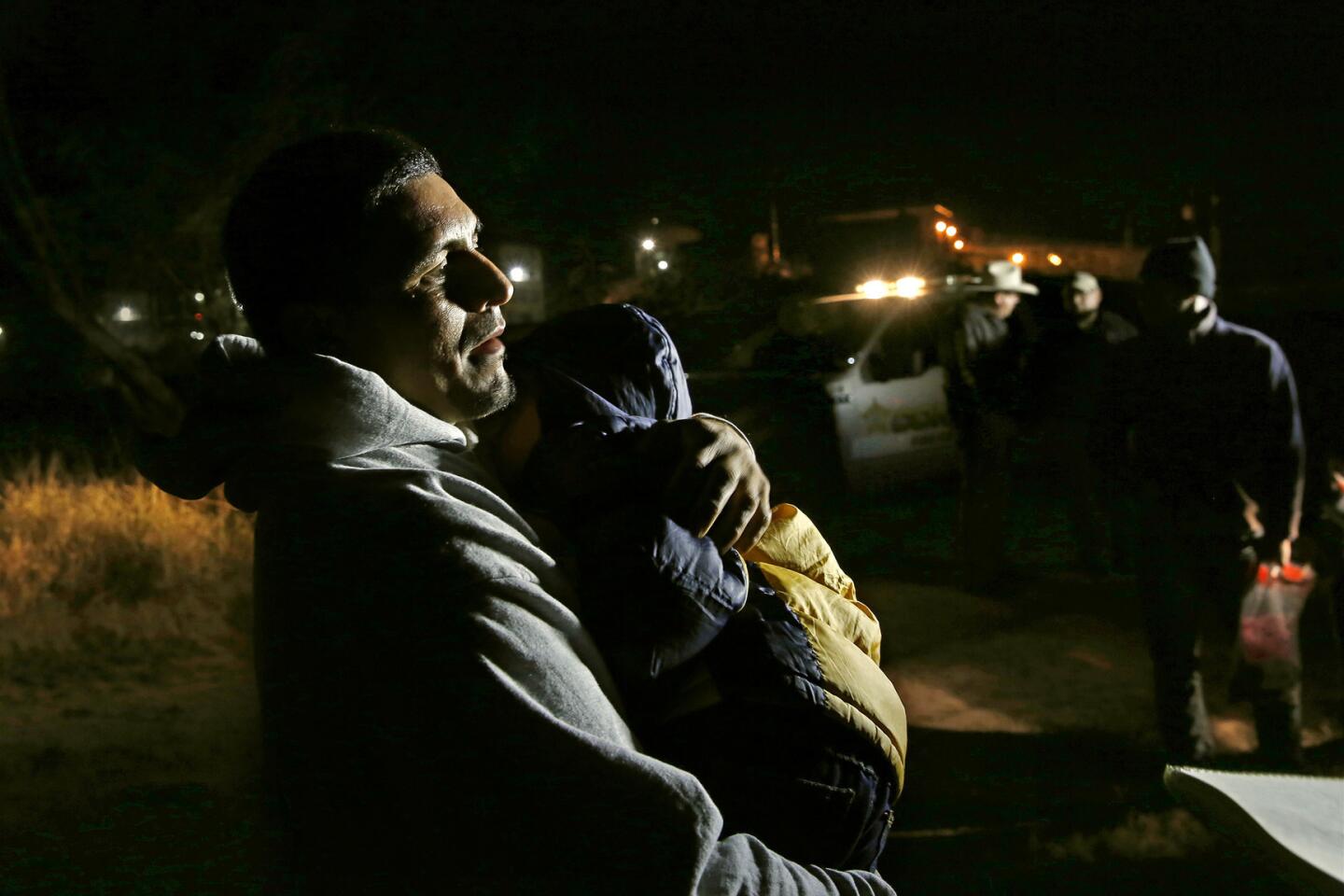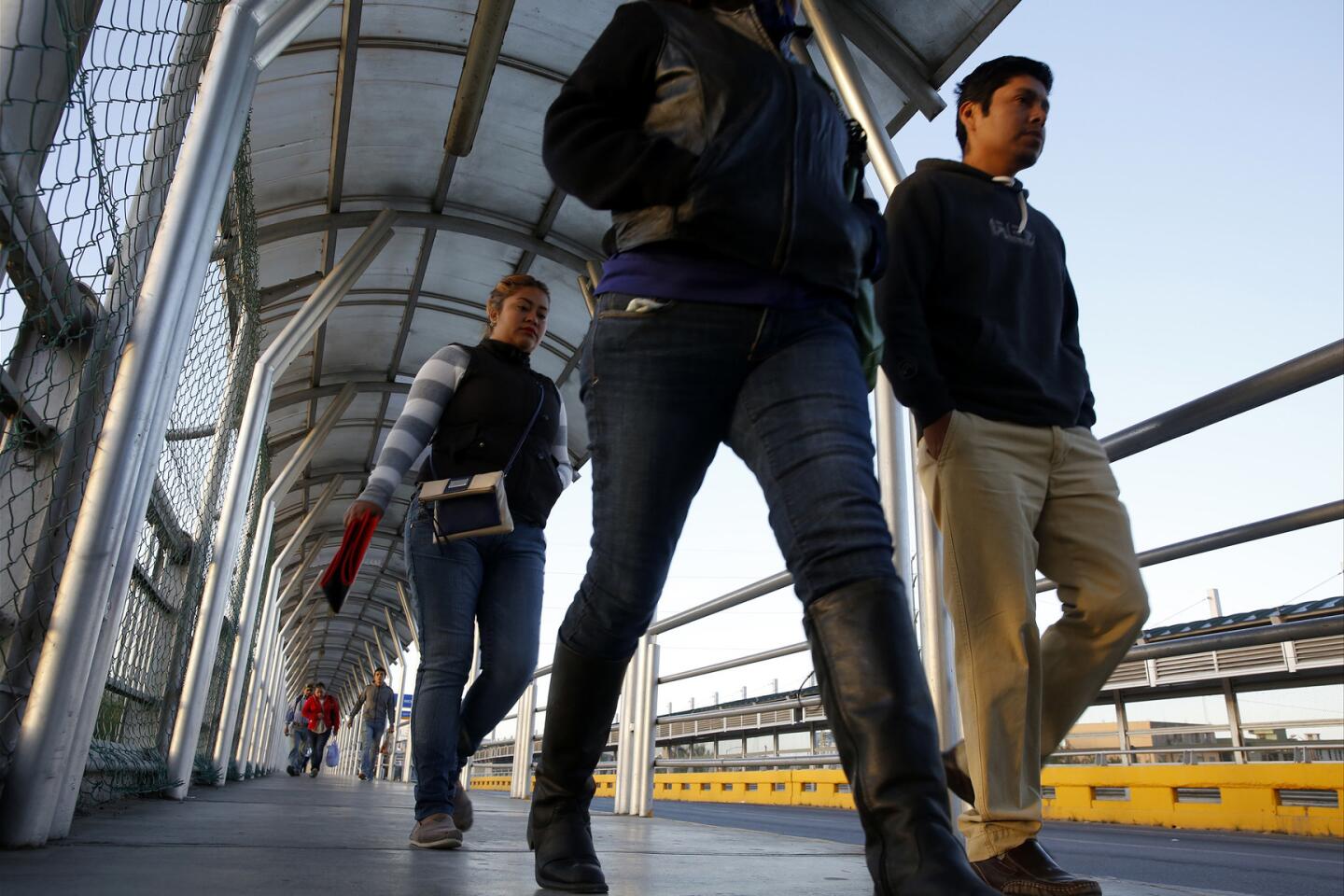You can build a wall -- except here, a river runs through it

Residents and Border Patrol agents discuss the state of the border and the prospect of President Trump’s wall.
Reporting from Progreso Lakes, Texas — Robert Cameron drove his pickup truck toward the Texas-Mexico border, past cotton and sugar cane fields, up to a 20-foot-tall metal and concrete border fence — and passed right through a gap in the barrier wide enough for a tractor-trailer.
Because of international treaty and flood zone requirements, the fence is set back from the winding Rio Grande, and since it divides some U.S. properties, the fence is broken up by gaps Texas residents use to traverse their land. Smugglers use them too.
“Bad guys could be crossing into the sugar cane and who’s here to stop them?” said Cameron. He voted for President Trump and supports his border wall proposal but said construction here will be tricky.
“How do you build a wall that’s impenetrable and still allow farmers, property owners, access to their land?” Cameron asked. “It’s doable, it’s just getting over the obstacles.”
As Trump issued an executive order to start construction on a wall, nowhere are the challenges more apparent than here in the Rio Grande Valley, ground zero for the flow of migrants and drugs north. The difficulties of building near a waterway — and the clashing opinions about a wall — are all on display here in Texas’ southern tip.
Cameron, 39, runs Texas Border Tours, which caters to outdoor enthusiasts, in Progreso Lakes, about 40 miles west of Brownsville. He pointed to Border Patrol cameras and observation towers.
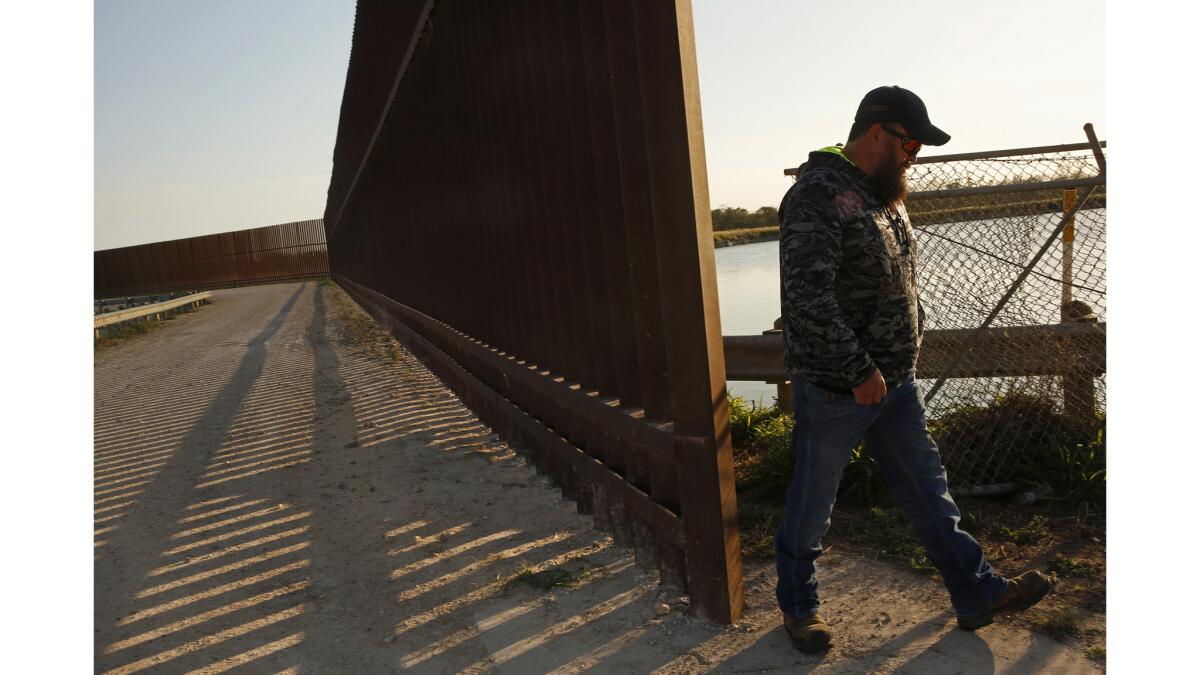
He’s filmed smugglers who waded into the shallows to carry bundles to the U.S. side. He’s seen migrants fleeing past homes, trampling fences, spooking his horses. Migrants once mobbed his sister’s car, mistaking it for a smuggler’s vehicle.
Nearly half of the migrants caught on the southern border last fiscal year — nearly 187,000 — were captured in the Rio Grande Valley, according to Customs and Border Protection. A third of the cocaine recovered on the southern border was found here.
About a third of the entire border is fenced, nearly 700 miles. But just 17% of the border in the valley has fencing, about 55 miles, a Border Patrol spokesman said. Much of that fence was built during Barack Obama’s presidency as part of the Secure Fence Act of 2006, which some residents and environmental groups unsuccessfully sued to block.
The fencing had to meet requirements of a 1970 treaty administered by the International Boundary and Water Commission, a joint U.S.-Mexican agency, which requires that structures built along the Rio Grande cannot disrupt its flow. The result: some U.S. property lies south of the fence but north of the Rio Grande.
Many locals have opposed fencing not just on political grounds (the border is largely Democrat and Latino), but because barriers split their land and, they fear, possibly affect water supply and wildlife.
To the east in Brownsville, near where the valley meets the Gulf of Mexico, the federal government seized land in 2009 to erect a stretch of fence on Eloisa Tamez’s ancestral home, a Spanish land grant from 1767.
Tamez, 81, a nursing professor at the University of Texas Rio Grande Valley, filed a federal lawsuit to stop the fence. The government ultimately took part of her property, paying Tamez a $56,000 settlement.
Though Tamez was given a code to open a gate in the fence, she insisted, “I was denied access to the southern part of my land.”
While she wants the area secure, Tamez complained that she had no input before the fence was built and calls it “a monstrosity.”
Tamez noted that the fence did not extend to wealthy nearby businesses and developments. She worried what the federal government would do next to her and other middle-class homeowners when constructing the new wall.
“There’s not a lot of trust there,” she said.
Pamela Taylor, 88, another longtime Brownsville resident, lives near a gap in the fence. She voted for Trump, but also built a sign at the end of her street that says, “We’re part of America, we need representation & protection, not a fence.”
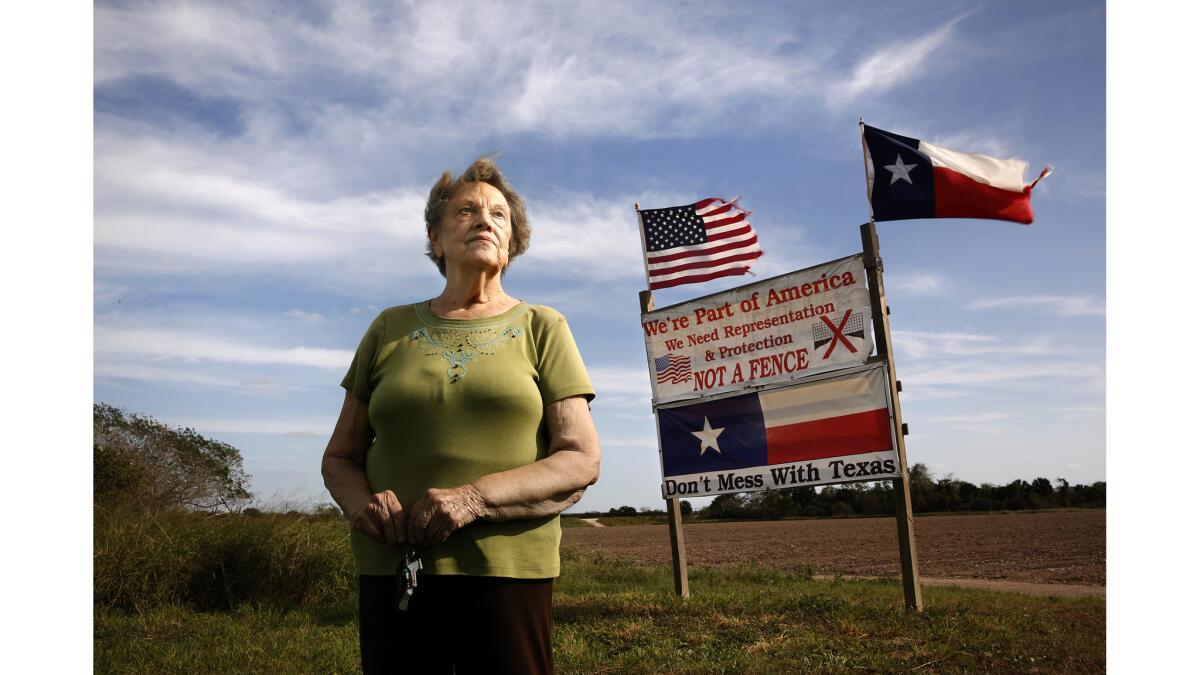
Standing near the sign last week, Taylor waved to a passing Border Patrol agent. She and her neighbors live on the south side of the fence, and while there’s a gap to accommodate a two-lane road, they are somewhat cut off from the rest of the area. She worries a new wall will isolate her even more — and that there won’t be enough agents to patrol it.
“They should hire more Border Patrol people, I mean lots more,” Taylor said. “You can have all the locks in the world but if someone wants to get in they’re going to find a way to do it.”
It’s not clear where new stretches of border wall will be built. Finding space will be a challenge in the Rio Grande Valley, where the river winds alongside homes, through wildlife refuges and parks.
Anzalduas Park in the town of Mission has become a popular spot for illegal crossings in recent years. There’s no border fence in the park.
Last week, constable’s deputies and Border Patrol agents caught more than 160 migrants, mostly Central Americans, illegally crossing the river on rafts and climbing the banks to the park.
Among them was Salvadoran migrant Silvia Segovia, 36, who emerged from riverbank brush after dark Thursday with 12-year-old son Jose by her side.
They had hoped to join her sister-in-law in Los Angeles because of gang violence in El Salvador. Her 30-year-old brother was kidnapped and killed last fall. They decided to risk the trip now because they feared the Trump administration would make crossing even more difficult.
“It’s a bad thing for us immigrants,” she said of the wall.
But it’s not clear whether the wall could be built here.
“The river has a mind of its own. In inclement weather if it floods, we’ve had the park flood before. There’s no feasible way to put a wall right up on the river,” said Hidalgo County Constable’s Sgt. Dan Broyles.
Chris Cabrera, vice president of the Rio Grande Valley chapter of the National Border Patrol Council, the union that represents agents, said plugging gaps and extending the wall will work only if enough agents are sent to monitor it.
Trump has said he plans to add 5,000 agents to the roughly 20,000 deployed nationwide, 17,000 of them on the southern border.
“You can build the wall as long as you want, but if you don’t have the agents to monitor it, people will still get through,” Cabrera said.
About 55 miles west near the edge of the valley in Roma, there’s no fence to stop migrants who regularly dash up the riverbank, across yards to a church and Dollar General Store. The town of about 10,000 sits so close to the river, residents wonder where it would fit.
“There’s not enough space from here to the river,” said Oziel Loera, 27, standing in his pharmacy work shirt and cowboy boots outside his riverfront house.
The government could build a wall, but “from where to where?” asked Loera as Border Patrol agents passed on foot patrol. A wall might be needed, but residents should not be displaced to make way for it, he said.
On the riverbank below, Border Patrol agents spotted a smuggler launching a yellow rubber raft with three people, a woman and two men, on board. The man at the helm, shirtless, paddled frantically against the current, drawing close to the U.S. side, where the raft could quickly be concealed by thick stands of Carrizo cane.
On the U.S. bank, Border Patrol Agent Isaac Villegas whistled.
That caught the paddler’s attention and he quickly retreated to the Mexican bank.
As Villegas watched the trio clamber ashore, a man in a dark coat stormed over to them, presumably another smuggler. He fumed loudly at the agents in barely audible Spanish. Villegas smiled.
“We deter them,” the agent said as he climbed the bank. “We did our job today.”
To read the article in Spanish, click here
ALSO
No, California’s environmental laws probably won’t block Trump’s border wall
El Paso and Juarez know what happens when a wall divides two cities
More to Read
Sign up for Essential California
The most important California stories and recommendations in your inbox every morning.
You may occasionally receive promotional content from the Los Angeles Times.

